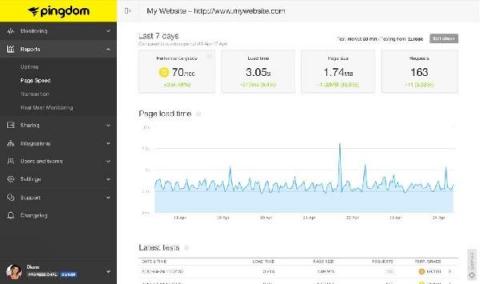Operations | Monitoring | ITSM | DevOps | Cloud
SEO
5 hacks to maximise your website's potential
There are reportedly over 1.7 billion websites, making it almost impossible for yours to stand out unless your name is Jeff Bezos and you started a little-known company called Amazon. That’s why, when our customers asked us what we would suggest to help their website perform better, we thought we’d whip together 8 quick and easy hacks that can easily be implemented but make a big difference.
Top 7 Paraphrasing Tools to Write SEO Friendly Articles
An effective SEO strategy requires you to create unique and SEO-friendly articles and blog posts consistently. This is the only way for you to make your blog seem relevant in the eyes of the search engines. But creating unique content is not always easy. Every content writer has to face at least some degree of writer’s block at some point in their writing journey. If you are going through the same problem and you are feeling stuck, then using paraphrasing tools can be quite helpful for you.
SEMrush - Your End-to-end SEO Solution
In today’s digital age, keeping up with market trends is exactly what a business has to do to stay ahead. Creating a solid online brand image plays a key role in this task, and to do it, dedicated SEO efforts go a long way. Crafting targeted keywords that can direct traffic to your webpages can work wonders in capturing a widespread customer base. Now what if we were to tell you that instead of doing everything manually, you could rely on an automated tool to take care of things?
Pulno - The Ideal Website Evaluator
If you’ve been working with SEO for some time, you’d know that although it’s a reliable way of improving your website’s searchability, it’s often marred by the downside of being very time-consuming. Moreover, manual SEO strategies could easily fail to achieve the desired results because of the ever-increasing level of competition. In such a scenario, an automated tool that helps you enhance your SEO efforts can prove to be a boon.
The ultimate Google Algorithm update checklist for your website
As we are all well aware, this month Google will be updating its algorithm with the aim of improving the user experience. With these changes, however, it’s reported that many of the top-ranking websites will be affected, meaning they need to take action now to ensure all of the hard SEO work they’ve done is not lost.
Core Web Vitals: Google's Upcoming Ranking Changes
From 1st May 2021, Google will start judging your website based on a new set of performance metrics called Core Web Vitals. This initiative is focused around user experience and will become part of Google’s ranking algorithm. Failing them is bad, getting them right is a huge opportunity. Only 23% of businesses currently pass these tests consistently, so organic SEO will be negatively impacted for the large majority of companies.
The hidden powers of content revealed
It’s 2021 and somehow, I’m still trying to convince people that content is one of the biggest revenue drivers there is. Back in 2017, there was an influx of “content is king” and “why content is important” blogs on LinkedIn and Medium, but it seems little notice has been taken in the years that have followed.
Page Speed vs. SEO: Does a Slow Website Affect Rankings?
How-To: Improving SEO with RUM
In this How-To video, we’re going to look at Real User Monitoring in the context of how you can apply it to a specific use case. Real User Monitoring, or RUM, is an event-based solution for monitoring customer experience. In other words, it measures the performance of a webpage from the perspective of the user’s machine. In our previous video on RUM, we looked at how to set up a RUM tag. Today, we’ll specifically examine RUM data in the context of improving SEO scores.









